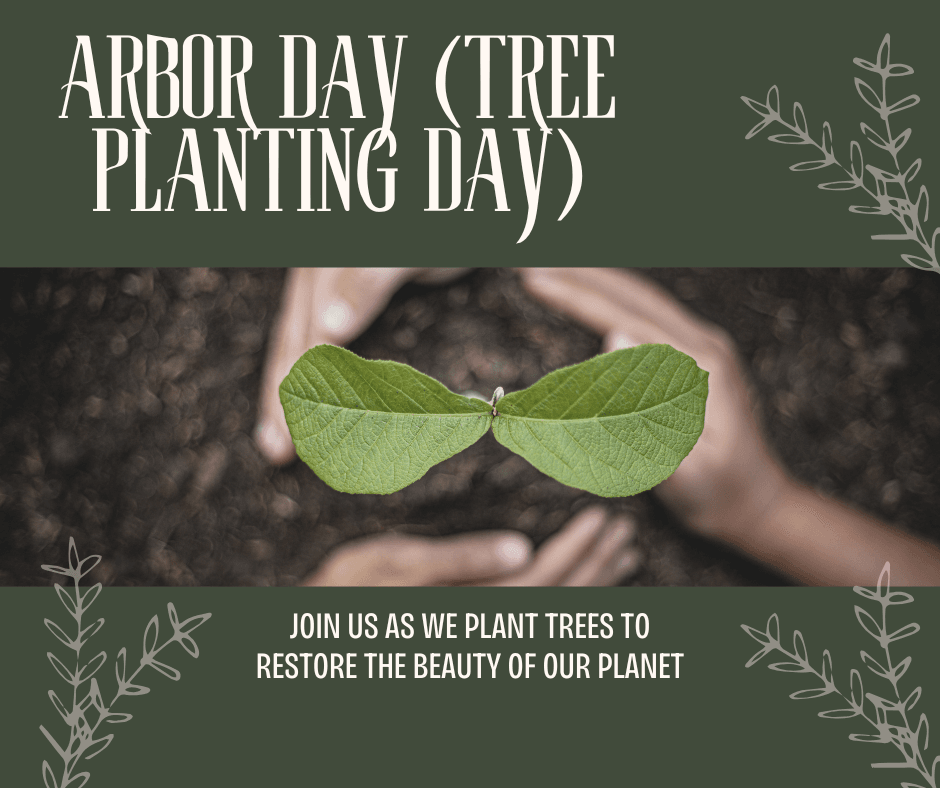Understanding Arbor Day: History and Significance
Arbor Day originated in the United States during the 19th century, founded by J. Sterling Morton, a dedicated advocate for forestry preservation. The inaugural celebration took place on April 10, 1872, in Nebraska, with the goal of encouraging the planting of trees. Morton’s insightful belief was that trees contributed significantly to the environment, providing numerous benefits such as shade, timber, and a habitat for wildlife. The initial Arbor Day saw the planting of over one million trees, a monumental achievement that underscored the importance of tree planting.
As the decades passed, Arbor Day expanded beyond Nebraska, influencing various states to adopt their designated observance. By the early 20th century, many countries recognized the necessity of tree planting days, integrating them into their national calendars. Today, Arbor Day is celebrated in numerous forms worldwide, reflecting the universal recognition of trees’ significance in enhancing our environment. Countries like Canada, the United Kingdom, and Australia have developed their own iterations of this vital day, each emphasizing tree planting within their unique contexts.
The significance of Arbor Day lies not just in its historical roots but also in its modern implications. Tree planting serves as a powerful tool against climate change, offering a natural method for carbon sequestration and improved air quality. Furthermore, trees play a crucial role in preserving local ecosystems and providing habitats for wildlife. Communities benefit significantly from these initiatives as well, experiencing enhanced aesthetics and increased property values. Thus, Arbor Day stands as a reminder of the collective responsibility to nurture and sustain our planet through the act of planting trees, ensuring a healthier environment for future generations.
Benefits of Tree Planting
The significance of tree planting day extends far beyond the mere act of putting a sapling in the ground; it embodies a multifaceted approach to enhancing both individual well-being and the health of the ecosystem. Trees play a vital role in improving air quality. Through the process of photosynthesis, they absorb carbon dioxide and release oxygen, contributing to cleaner and healthier air. This is particularly crucial in urban environments, where pollution levels can significantly affect residents’ health.
Additionally, trees enhance biodiversity by providing habitat and food for various species, including birds and small mammals. These habitats contribute to the stability of local ecosystems and promote ecological balance. By increasing green spaces in cities, tree planting helps in retaining native species, fostering an overall environment that stimulates various forms of life.
The provision of shade and cooling effects is another remarkable benefit. Tree canopies can lower temperatures in urban areas, mitigating the urban heat island effect—a phenomenon that causes city temperatures to be warmer than surrounding rural areas. This cooling not only increases comfort for residents but also reduces energy consumption by lessening the dependency on air conditioning, thereby contributing to a more sustainable lifestyle.
Mental health is yet another area where the benefits of trees become evident. Studies have shown that proximity to green spaces can significantly enhance psychological well-being. Trees create serene environments that can reduce stress, promote relaxation, and even improve cognitive function. Trees and nature are often connected with restorative experiences, paving the way for improved mental health in communities.
From an economic standpoint, tree planting day can lead to increased property values as homes near green spaces typically command higher prices. Additionally, the tree planting and maintenance industries offer substantial job creation opportunities in landscaping, forestry, and environmental management. Therefore, the act of planting trees yields substantial benefits for both individuals and the ecosystem, making it a crucial endeavor for community health and economic sustainability.
How to Celebrate Arbor Day: Practical Tips and Ideas
Arbor Day, a celebration dedicated to the importance of tree planting, presents an excellent opportunity for individuals and communities to engage in meaningful environmental actions. There are numerous ways to observe this important day, starting with hosting or participating in a local tree planting event. Community gatherings focused on planting new trees not only enhance green spaces but also foster a sense of unity among residents. To maximize impact, consider reaching out to local environmental organizations for support in organizing such events.
In addition to tree planting, participating in community clean-up efforts is another impactful way to celebrate Arbor Day. These activities encourage individuals to take responsibility for their local environment, promoting cleanliness and conservation. Engaging in clean-up efforts around parks, rivers, or other natural habitats helps to protect existing trees and promotes biodiversity within the community.
Education plays a vital role in the observance of Arbor Day. Sharing knowledge about the importance of trees and their ecological benefits can inspire others to join in tree-related initiatives. Create educational workshops or outreach campaigns that highlight the significance of tree planting, not just on Arbor Day, but throughout the year. This could involve collaborating with local schools or community centers to enhance awareness among younger generations.
Incorporating tree planting into personal or family traditions can also reinforce the importance of this day in everyday life. Whether planting a tree in honor of a loved one or commemorating a significant event, these personal touches create lasting memories while promoting sustainability. It is essential, however, to select appropriate tree species that thrive in your local climate and soil conditions. Researching suitable trees and choosing the right locations for planting will ensure the long-term health and growth of these new additions to your environment.
Ultimately, by embracing these practical tips and encouraging community participation, Arbor Day can serve as a catalyst for ongoing environmental stewardship and awareness.
Join the Movement: Resources and Organizations for Tree Enthusiasts
As the significance of tree planting continues to gain traction, a variety of resources and organizations have emerged to support tree enthusiasts in their efforts. One prominent organization is the Arbor Day Foundation, which actively organizes annual tree planting day events across the United States. This foundation not only promotes the planting of trees but also provides educational materials and resources designed to raise awareness about the ongoing importance of trees in both urban and rural settings.
In addition to national organizations, local nonprofits play a critical role in community-level tree conservation initiatives. For instance, the Trees for Cities project works in urban areas to improve green spaces and enhance the overall environment. Engaging with local groups like this can provide valuable opportunities for individuals to participate in public tree planting day events, volunteer for planting activities, and educate themselves and others about the benefits of trees.
Moreover, educational institutions often host workshops and seminars that focus on the critical role of forestry and the environmental benefits of tree planting. Participating in these events is an effective method for gaining greater insight into sustainable practices and connecting with like-minded individuals.
To get involved in tree planting initiatives, individuals can start by volunteering with local environmental organizations, attending community meetings, or even organizing their own tree planting day events. Additionally, donating to reputable conservation organizations can significantly impact their programming and outreach initiatives. By spreading awareness through social media or community outreach, people can foster a greater appreciation for trees and their vital role in maintaining ecological balance.
Ultimately, every action, whether big or small, contributes to a collective movement aimed at enhancing the environment through tree planting. In pursuit of a greener future, it is essential for individuals to connect with organizations that align with their goals, thus enabling them to become active participants in tree conservation efforts.




